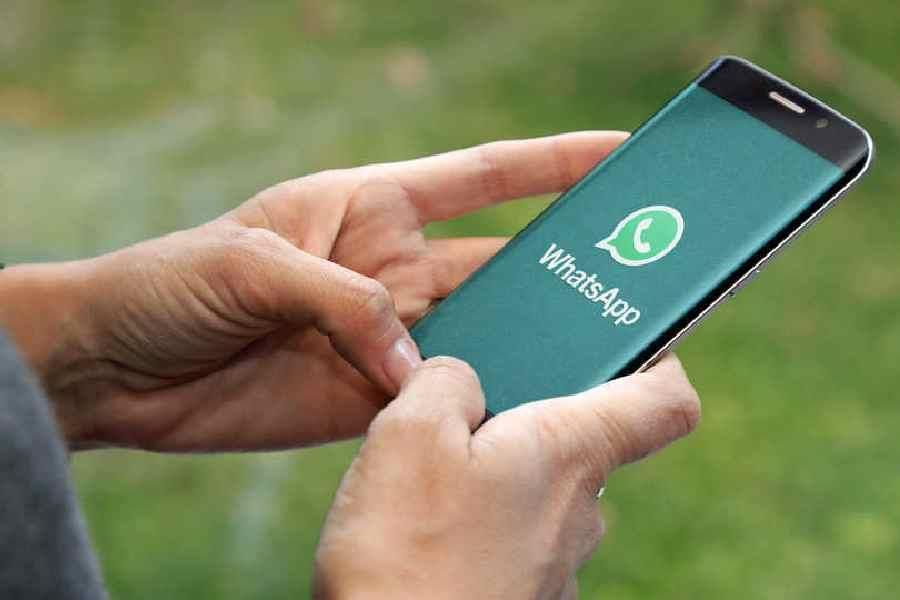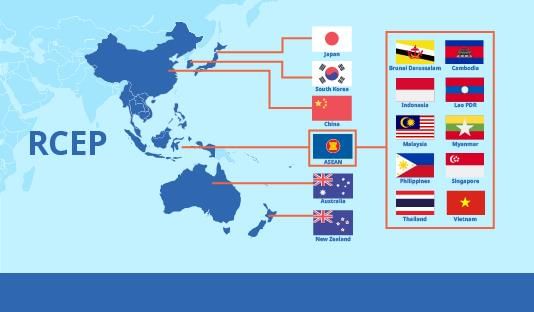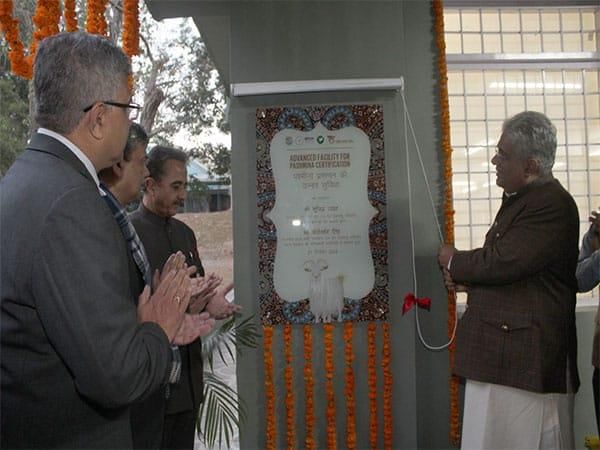UPSC Daily Current Affairs: 22nd December 2024 | Current Affairs & Hindu Analysis: Daily, Weekly & Monthly PDF Download
GS2/Polity
Centre Amends Rule to Restrict Access to Poll Documents
Source: The Hindu
 Why in News?
Why in News?The Central Government has recently amended Rule 93 of the Conduct of Election Rules, 1961, to limit public access to certain election-related documents. This change, initiated by the Ministry of Law and Justice upon the recommendation of the Election Commission of India (ECI), aims to enhance voter privacy and prevent the misuse of sensitive electronic records. However, the amendment has faced criticism for potentially reducing transparency in the electoral process.
- The amendment modifies the previous rule allowing access to all election-related documents.
- Only specific documents will remain accessible, excluding certain electronic records.
- Concerns have been raised regarding the transparency and integrity of the electoral process.
Additional Details
- Rule Modification:
- Previous Rule 93 permitted public access to all election-related documents.
- Amended Rule 93 restricts access to only documents explicitly mentioned, excluding CCTV footage, webcasting clips, and video recordings.
- Scope of Exclusion: Nomination forms, election results, and election account statements will still be accessible, while electronic materials are excluded to prevent misuse.
- Legal Trigger: The amendment follows a directive from the Punjab and Haryana High Court to provide election-related documents in a legal case.
- Concerns Over Misuse: ECI officials noted risks related to sharing electronic footage, including breaches of privacy and the potential for manipulation using Artificial Intelligence (AI), especially in sensitive regions like Jammu and Kashmir.
- Safeguards for Candidates: Candidates retain access to essential election records. However, non-candidates must obtain court permission for access.
- Criticism and Concerns:
- Critics argue that the amendment limits public oversight, notably over observer reports and voter turnout data.
- Opposition leaders allege that this move undermines electoral integrity.
- Significance of the Move:
- The amendment aims to enhance voter security, particularly in sensitive regions.
- While it balances security and public access, critics see it as a step backward for electoral transparency.
- Potential Legal Challenges: Opposition parties plan to contest the amendment, emphasizing the need for transparency as fundamental to democracy.
The amendment illustrates the government's effort to modernize election security while grappling with transparency issues. A more robust mechanism that balances security and public access may be essential to restore confidence in the electoral process.
GS2/Governance
US Court Holds Israeli Company NSO Liable for Targeting WhatsApp Users
Source: Indian Express
 Why in News?
Why in News?Meta's WhatsApp has achieved a pivotal legal victory as a US federal court has found the Israeli firm NSO Group liable under federal and California laws for conducting spyware attacks on approximately 1,400 devices.
- The court ruling stemmed from a lawsuit filed by WhatsApp in 2019, which accused NSO of employing Pegasus spyware to hack the phones of nearly 1,400 individuals in May 2019.
- The court will now assess the damages owed by NSO Group as a result of this ruling.
Additional Details
- Pegasus Spyware: This spyware can infiltrate devices through exploit links or missed video calls without any user interaction. Once installed, it provides complete access to the target's phone, including passwords, messages, calls, camera, and microphone.
- Capabilities of Pegasus:
- Accesses private data such as passwords, contact lists, calendar events, emails, SMS, and browsing history.
- Activates the phone’s camera and microphone to conduct live surveillance.
- Compatible with Android, iOS, BlackBerry, and Symbian devices.
- Operates stealthily, leaving no trace, featuring a self-destruct mechanism, and using minimal resources to elude detection.
- Notably, at least two dozen Indian academics, lawyers, Dalit activists, and journalists were reportedly targeted by this spyware.
- NSO claims that it only sells Pegasus to licensed government intelligence and law enforcement agencies.
GS3/Environment
India State of Forest Report 2023
Source: PIB
Why in News?
The Minister for Environment, Forest and Climate Change recently released the ‘India State of Forest Report 2023 (ISFR 2023)’ at the Forest Research Institute in Dehradun. This report is crucial for understanding the current status and trends of forest and tree resources in India.
- The report is the 18th edition published by the Forest Survey of India (FSI) since 1987.
- It assesses India's forest and tree resources using Remote Sensing satellite data and the National Forest Inventory (NFI).
- Forest and tree cover in India constitutes 17% of the geographical area, with 21.76% being forest cover and 3.41% tree cover.
Additional Details
- Increase in Forest Cover: Compared to the assessment in 2021, there has been a noted increase in both forest and tree cover across the country.
- Top States by Increase: The top four states showing maximum increases in forest and tree cover are Chhattisgarh, Uttar Pradesh, and Odisha.
- Largest Forest Areas: Area-wise, the states with the largest forest and tree cover are Madhya Pradesh, Arunachal Pradesh, and Maharashtra.
- Highest Percentage of Forest Cover: Lakshadweep has the highest percentage of forest cover at 91.33%, followed closely by Andaman & Nicobar Islands.
- Nineteen states and Union Territories (UTs) have over 33% of their geographical area under forest cover, with eight states/UTs having more than 75% forest cover.
- Mangrove Cover: The total mangrove cover in India is reported to be 4,992 sq km.
- Bamboo Bearing Area: There is an increase in the bamboo bearing area compared to the previous assessment done in 2021.
- Carbon Stock: India's carbon stock has reached 30.43 billion tonnes of CO2 equivalent, indicating a growth of 2.29 billion tonnes since the base year of 2005, moving towards the target of 2.5 to 3.0 billion tonnes by 2030.
This report serves as a vital resource for policymakers, environmentalists, and researchers, providing insights into the health of India's forests and contributing to global climate change efforts.
GS1/History & Culture
Sahitya Akademi Awards
Source: The Hindu
Why in News?
The Sahitya Akademi recently announced its annual Sahitya Akademi Awards, as recommended by jury members in 21 different languages. This announcement highlights the recognition of outstanding literary contributions in India.
Key Takeaways
- The Sahitya Akademi Awards honor exceptional books of literary merit published in various Indian languages.
- Winners receive a plaque, a shawl, and a cash prize of ₹1 lakh.
- The awards cover 22 languages listed in the Indian Constitution, along with English and Rajasthani.
Additional Details
- Sahitya Akademi Awards: These awards are given to celebrate the most outstanding literary works in major Indian languages recognized by the Akademi.
- Established: The Sahitya Akademi was inaugurated by the Government of India on March 12, 1954, and is registered under the Societies Registration Act of 1860.
- Function: It serves as the central institution for literary dialogue, publication, and promotion across the country, supporting activities in 24 Indian languages, including English.
- Administration: The Akademi operates as an autonomous organization under the Ministry of Culture, with its head office located in New Delhi.
The Sahitya Akademi Awards play a crucial role in promoting literary excellence and recognizing the diverse cultural heritage of India through its languages.
GS3/Science and Technology
Hydroxychloroquine and Its Controversies
Source: Nature
 Why in News?
Why in News?The paper published in the International Journal of Antimicrobial Agents concerning hydroxychloroquine was withdrawn due to ethical approval concerns regarding the research methodology.
- The study by French researcher Didier Raoult claimed that hydroxychloroquine (HCQ) and its combination with azithromycin significantly reduced SARS-CoV-2 viral load.
- The paper was retracted on December 17, 2024, due to ethical and methodological issues.
Additional Details
- About Hydroxychloroquine (HCQ):HCQ is a medication primarily used to treat:
- Malaria
- Rheumatoid arthritis
- Systemic lupus erythematosus (SLE)
- HCQ functions by reducing immune system activity or eliminating malaria-causing parasites transmitted by Anopheles mosquito bites.
- Use in Autoimmune Disorders:It is effective in managing conditions by:
- Reducing joint inflammation in rheumatoid arthritis.
- Controlling overactive immune responses in systemic lupus erythematosus.
- HCQ and COVID-19:
- Early studies suggested that HCQ could lower SARS-CoV-2 viral loads, particularly in combination with azithromycin.
- It was proposed as a prophylactic to prevent COVID-19; however, large-scale applications raised concerns regarding:
- Risks of cardiac arrhythmias
- Potential liver damage
- Possible weakening of the immune system’s response to infections
This situation underscores the importance of rigorous ethical standards and methodological integrity in clinical research, especially during public health emergencies.
GS3/Economy
Free Trade Agreement (FTA)
Source: Economic Times
 Why in News?
Why in News?The External Affairs Minister of India has emphasized a cautious approach to Free Trade Agreements (FTAs) to protect farmers and Micro, Small, and Medium Enterprises (MSMEs). This discussion took place during the Bharat@100 Summit organized by ASSOCHAM.
- FTAs aim to reduce or eliminate trade barriers between countries.
- India is prioritizing the protection of its agricultural sector and MSMEs in trade negotiations.
- Major FTAs include agreements with ASEAN, South Korea, and proposed agreements with the UK and EU.
Additional Details
- Definition: Free Trade Agreements are comprehensive trade deals between two or more countries that aim to reduce or eliminate trade barriers, such as tariffs and import/export restrictions. They provide preferential access to markets through tariff concessions and lower non-tariff barriers.
- Key Features:
- FTAs cover trade in goods (both agricultural and industrial products) and services (such as banking, IT, and construction).
- Advanced FTAs may also include provisions on investment, intellectual property rights (IPRs), government procurement, and competition policy.
- Types of Trade Agreements:
- Partial Scope Agreements (PSA): Focus on a limited number of goods.
- Free Trade Agreements (FTA): Reduce tariffs between member countries while maintaining individual tariff policies for non-members.
- Customs Union: Features a common external tariff for non-member countries.
- Common Market: Ensures free movement of goods, services, and factors of production.
- Economic Union: Coordinates macroeconomic and exchange rate policies among member nations.
In conclusion, India's approach to FTAs is driven by the need to balance international trade benefits with domestic economic protections, particularly for vulnerable sectors like agriculture and small businesses.
GS3/Science and Technology
Automated & Intelligent Machine-aided Construction (AIMC)
Source: Business Standard
Why in News?
The Ministry of Road Transport & Highways (MoRTH) is set to implement Automated & Intelligent Machine-aided Construction (AIMC) to enhance the efficiency of National Highway construction in India. This initiative aims to leverage advanced technology and real-time data sharing to improve road quality and construction speed.
- AIMC integrates intelligent machines for efficient National Highway construction.
- The objective is to boost productivity and reduce reliance on traditional post-construction surveys.
- It addresses challenges such as outdated technologies and poor contractor performance.
Additional Details
- AIMC Overview: AIMC is a system designed to optimize the construction process by using intelligent machines and real-time data sharing.
- Objective of AIMC: The primary goals include increasing road durability, enhancing productivity, and minimizing delays caused by uncoordinated data.
- Types of AIMC Machines:
- GPS-Aided Motor Grader: Utilizes Global Navigation Satellite System (GNSS) data for precise grading and aligns with digital design plans.
- Intelligent Compaction Roller (IC Roller): Helps reduce consolidation issues after construction by minimizing air pockets in materials.
- Single Drum/Tandem Vibratory Roller: Ensures effective compaction of soil and base layers for road stability.
- Current Network: India’s National Highway network covers approximately 46 lakh km, including 3,000 km of high-speed corridors.
- Future Vision: By 2047, the Ministry aims to expand this network by an additional 45,000 km to ensure a robust infrastructure system.
This initiative represents a significant step towards modernizing highway construction in India and ensuring the delivery of high-quality roads that meet future demands.
GS2/Health
Dinga Disease
Source: Times of India
 Why in News?
Why in News?Recently, Uganda has been facing a public health crisis due to a mysterious illness known locally as "Dinga Dinga." This condition has severely impacted the lives of many, particularly women and girls, leading to widespread concern among health experts and the community.
- The illness, referred to as "Dinga Dinga," translates to "shaking like dancing."
- It primarily affects women and girls and is marked by symptoms such as fever and uncontrollable body shaking.
- In severe cases, individuals may experience paralysis-like symptoms, severely affecting mobility.
- The cause of Dinga Dinga remains unidentified, despite ongoing investigations by health authorities.
Additional Details
- Symptoms:The illness is characterized by several distressing symptoms, including:
- Uncontrollable body shaking: Patients exhibit violent, involuntary movements reminiscent of dancing.
- Fever and extreme weakness: Affected individuals often report high fever and significant fatigue.
- Paralysis-like immobility: Some patients experience sensations similar to paralysis, making basic movements like walking very difficult.
- Treatment: Currently, the illness is being managed with antibiotics, though this approach is still under evaluation.
The mysterious nature of Dinga Dinga continues to pose challenges for health officials in Uganda as they work to identify its cause and develop effective treatment strategies. Ongoing research and public awareness are crucial in combating this troubling health issue.
GS3/Science and Technology
Quantum Satellite for India's National Quantum Mission
Source: The Hindu
Why in News?
India is preparing to launch a quantum satellite aimed at enhancing secure communication through quantum technology within the next 2-3 years.
- The satellite will utilize quantum physics to secure its communication signals.
- It aims to protect against potential threats posed by quantum computing.
- The initiative is part of the National Quantum Mission (NQM), which has a significant budget allocated for its development.
Additional Details
- Quantum Satellite: A communications satellite that employs the principles of quantum physics to ensure the security of its signals.
- Purpose:
- Enhance signal security: Protect against threats from quantum computing.
- Facilitate Quantum Key Distribution (QKD): This method enables unbreakable encryption through the secure sharing of encryption keys, where any eavesdropping can be detected.
- Mechanisms:
- Quantum Measurement: Measuring a photon alters its state, making any eavesdropping evident.
- Quantum Entanglement: Entangled photons will reflect changes in one another instantly, ensuring secure key distribution.
- National Quantum Mission (NQM): Launched by the Department of Science & Technology, this initiative aims to accelerate the application of quantum physics in developing advanced communication and sensing systems.
- Budget and Duration: Approved by the Union Cabinet in April 2023, the NQM has a budget of ₹6,000 crore and will be implemented from 2023 to 2031.
- Micius: The world's first quantum communications satellite, launched by China in 2016, serves as a source of pairs of entangled photons, essential for quantum cryptography.
This ambitious project marks a significant step forward in quantum technology, potentially setting the stage for unbreakable communication channels and enhanced data security.
GS3/Science and Technology
Next Generation DNA Sequencing and Pashmina Certification Facility
Source: Business Standard
 Why in News?
Why in News?The Union Minister for Environment, Forest and Climate Change has inaugurated the Advanced Facility for Pashmina Certification and the Next Generation DNA Sequencing (NGS) Facility at the Wildlife Institute of India (WII) in Dehradun. This initiative marks a significant advancement in both wildlife conservation and the Pashmina trade.
- Establishment of a cutting-edge NGS facility for analyzing genetic diversity and health in wildlife.
- Introduction of a Pashmina Certification Centre to authenticate and streamline Pashmina trade.
Additional Details
- Next Generation DNA Sequencing (NGS): NGS is a transformative technology that allows for the rapid and simultaneous decoding of entire genomes. This capability facilitates in-depth research into genetic diversity, evolutionary relationships, and population health in wildlife.
- Role in Wildlife Conservation: NGS is crucial for assessing population genetic health, understanding disease outbreaks, detecting illegal wildlife trade, and studying the impacts of climate change on biodiversity.
- Pashmina Certification Centre: Established under a Public-Private Partnership (PPP) model between WII and the Export Promotion Council for Handicrafts (EPCH), the centre aims to provide a one-stop testing facility that certifies genuine Pashmina products free from prohibited fibres.
- Enhanced Testing Facilities: The upgraded facility includes a Scanning Electron Microscope (SEM) with Energy Dispersive Spectroscopy (EDS), which improves the accuracy and reliability of Pashmina wool testing and certification.
- Global Trade Facilitation: The facility offers unique ID tagging and e-certificates for certified products, ensuring traceability and quality assurance while facilitating hassle-free movement in national and international markets.
This advanced facility positions the Wildlife Institute of India as a leading hub for molecular and genetic research in wildlife conservation, significantly contributing to both environmental science and the sustainable Pashmina trade.
GS3/Economy
SMILE Programme
Source: Business Standard
Why in News?
The Indian government, in partnership with the Asian Development Bank (ADB), has secured a significant $350 million policy-based loan under the second subprogramme of the Strengthening Multimodal and Integrated Logistics Ecosystem (SMILE) programme. This initiative aims to reform and enhance the logistics sector in India.
Key Takeaways
- The SMILE programme is a programmatic policy-based loan designed to facilitate extensive reforms in India's logistics sector.
- This initiative consists of two subprogrammes focused on expanding the manufacturing sector and enhancing the resilience of supply chains in India.
- Collaboration involves key government departments, such as the Department of Economic Affairs (DEA) and the Department for Promotion of Industry and Internal Trade (DPIIT), alongside ADB.
Additional Details
- Strengthening Institutional Frameworks: This involves building capacities at various levels—national, state, and city—to ensure the effective integration of multimodal logistics infrastructure.
- Standardising Warehousing: The programme aims to create uniform standards that would streamline supply chains and attract private investments.
- Improving Trade Logistics: Focused on enhancing the efficiency of India's external trade operations to facilitate smoother trading processes.
- Promoting Smart, Low-Emission Systems: The initiative will leverage advanced technologies to enhance operational efficiency while simultaneously reducing environmental impacts.
This landmark agreement is expected to significantly boost logistics reforms and efficiency in India, paving the way for a more robust and integrated logistics ecosystem.
|
39 videos|4343 docs|919 tests
|
|
39 videos|4343 docs|919 tests
|

|
Explore Courses for UPSC exam
|

|

















